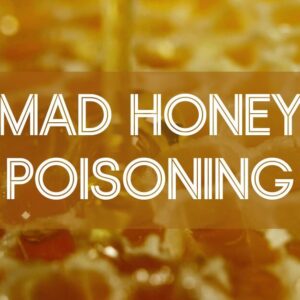Postmortem toxicology plays a vital role in forensic science as it helps investigators gain insights into the substances found in a deceased individual’s body. During this process, preservatives are utilized to maintain the integrity of biological samples. However, the impact of these preservatives on the accuracy of toxicology results is a significant concern.
In this article, we delve into the correlation between preservatives and postmortem toxicology. We will examine how commonly used preservatives can influence the reliability of findings, shedding light on the challenges faced by forensic experts. By comprehending these intricacies, we aim to emphasize the importance of striking a delicate balance between preserving samples and ensuring precise toxicology results in the investigation of deaths.
Commonly Used Preservatives
Preservatives are essential in the post-mortem process as they protect the integrity of samples by preventing decomposition and the growth of microbes. In forensic labs, the selection of preservatives is crucial as it greatly affects the accuracy and dependability of postmortem toxicology findings.
In this article, we will take a closer look at commonly employed preservatives, examining their characteristics, uses, and how they may influence the stability of substances in the body.
1. Formaldehyde
- Properties: Formaldehyde, a potent fixative, is renowned for its remarkable preservation abilities. It interacts with proteins, creating connections that prevent tissue breakdown.
- Applications: Formaldehyde, a substance widely utilized in embalming and tissue preservation, is also employed in post-mortem toxicology to prevent autolysis and putrefaction.
- Impact on Stability: The relationship between drugs and formaldehyde can be both beneficial and harmful. When formaldehyde interacts with certain drugs, it can cause changes in their chemical makeup, making them harder to identify during toxicology analysis. This effect is especially significant when it comes to volatile substances, as formaldehyde can interfere with the detection and measurement of these compounds.
2. Ethanol
- Properties: Ethanol is a multi-purpose preservative that possesses antimicrobial properties. It functions as a dehydrating agent, effectively inhibiting the proliferation of bacteria and fungi.
- Applications: Ethanol is often utilized to preserve blood samples and maintain alcohol levels. It is a gentler alternative to formaldehyde and is ideal for preserving delicate tissues.
- Impact on Stability: Ethanol is a widely utilized preservative known for its selective preservation properties. It is highly effective in preserving alcohol levels, which is crucial in numerous forensic investigations. However, it is important to note that ethanol can hurt the stability of drugs. This can lead to difficulties in obtaining precise measurements during toxicology analysis, as ethanol may contribute to the degradation of certain drugs. Therefore, it is essential to carefully consider the choice of preservative based on the substances involved in a particular case, due to the paradoxical nature of ethanol.
3. Sodium Fluoride
- Properties: Sodium fluoride acts as an anti-glycolytic agent, effectively blocking the activity of enzymes that play a role in glycolysis. This prevents the breakdown of glucose and its subsequent utilization.
- Applications: Sodium fluoride is commonly used to preserve blood samples for analyzing volatile substances. It also plays a crucial role in keeping glucose levels stable.
- Impact on Stability: Sodium fluoride is commonly used as a preservative to prevent the breakdown of certain drugs, especially volatile compounds like benzodiazepines. However, it’s important to note that the effect of sodium fluoride on drug stability varies depending on the substance. While it may effectively preserve some drugs, it can potentially affect the stability of others. This highlights the importance of carefully selecting preservatives based on the specific substances expected in a post-mortem sample. be carefully considered based on the anticipated substances in a given case.
4. Potassium Oxalate
- Properties: Potassium oxalate is a substance that acts as a chelating agent, which means it can bind to calcium ions. This binding process then prevents enzymes that depend on calcium from functioning properly.
- Applications: Potassium oxalate is widely utilized in toxicology to inhibit blood coagulation. It proves to be especially beneficial in cases where plasma samples are needed for analysis.
- Impact on Stability: It is important to choose potassium oxalate carefully when analyzing substances, as it may interfere with detecting certain substances. However, it is effective in preserving the liquid state of blood.
5. Citric Acid
- Properties: Citric acid, a mild organic acid with chelating abilities, helps to inhibit the creation of calcium and magnesium salts.
- Applications: Citric acid is a valuable tool in preserving the pH balance of biological samples and preventing blood clotting when used alongside other preservatives.
- Impact on Stability: Citric acid is typically regarded as gentle, although its ability to prevent clotting can differ based on the type of sample and the substances being studied.
Challenges in Quantification of Postmortem Toxicology
1. Variability in Post-Mortem Conditions
The impact of preservatives on quantification can vary due to several factors related to death. These factors include the time since death, the environment, and the condition of the body. Advanced decomposition or putrefaction can interact differently with preservatives, making it difficult to establish standardized protocols.
Laboratories need to take into account these variables and consider the specific conditions of each case when interpreting toxicology results.
2. Complexity of Biological Matrices
Postmortem toxicology relies on biological samples like blood and tissues, which are intricate mixtures of various compounds. The inclusion of preservatives further complicates matters, potentially causing co-elution or interference with the desired analytes. To overcome these challenges and ensure precise quantification, advanced sample preparation techniques, and chromatographic methods are essential.
3. Impact on Multi-Drug Analysis
Postmortem toxicology cases often require the examination of various drugs or substances. The presence of preservatives can complicate the process of quantifying multiple compounds simultaneously, as different drugs may be affected in different ways.
To ensure accurate and comprehensive toxicology results, laboratories must validate methods for analyzing multiple drugs, taking into account the potential interactions and interferences caused by preservatives.
4. Resource Limitations and Technological Advancements
Laboratories often encounter limitations in resources, such as budget constraints and outdated equipment. It is essential for them to stay updated with the latest technological advancements in preservative methods and analytical instrumentation to improve the accuracy of quantification.
To overcome challenges posed by preservatives and stay ahead in forensic toxicology practices, laboratories should aim to invest in cutting-edge technology and methodologies.
5. Education and Training
It is crucial to provide proper education and training to forensic professionals who work in post-mortem toxicology. Continuous learning and skill development are necessary to comprehend the complexities of preservative effects on quantification.
Forensic scientists need to stay updated with the latest research findings, methodologies, and best practices to effectively handle the challenges related to preservatives in post-mortem toxicology.
Conclusion
The influence of preservatives on postmortem toxicology outcomes is an intricate and diverse aspect of forensic science. Although preservatives are necessary to preserve the integrity of samples, there is a concern that they may modify the chemical makeup of substances in the body, thus affecting the accuracy and dependability of toxicology findings.
Forensic experts must tackle these challenges by constantly improving methodologies and protocols to find the right equilibrium between preservation and precision. With the advancement of technology, the field of post-mortem toxicology is expected to adapt and resolve these concerns, ensuring that precise and trustworthy results continue to be a priority in forensic investigations.






